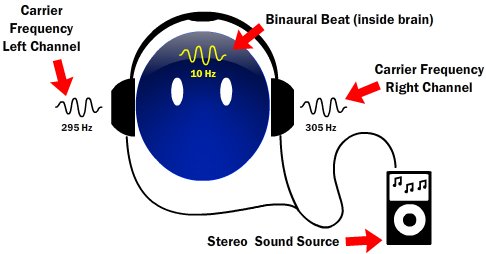



While there are theories, it’s uncertain, and it’s also uncertain which tones and frequencies work best for improvements. What we do not know is which region generates the binaural beat sound – the sound that isn’t really there. You cannot hear binaural beats with one ear. Just a few hertz difference, and your brain perceives a sort of beat that isn’t even present within the song or sound that you’re listening to. Here’s the basic concept: one ear hears a tone that is slightly different than the other ear. They are beats created by opposite sounds being poured into each ear, thus the name “binaural”. In a way they are, but in truth, they do exist. To some, these sounds, or absences of sound, are illusions. What are binaural beats and how do they work? But all this talk about how well the beats work makes us want to understand exactly what binaural beats are. There is such a large consensus of those that think binaural beats reduce headache pain, that Bayer, the manufacturer of aspirin, has seven files of binaural beats on its website in Austria.īayer’s statement is that it’s not necessarily used to stop headache pain, but to bring about relaxation which may help with headache pain. There are also those who put their faith in these sounds to correct cognitive issues, ADHD, and even mental trauma. Many people back up the idea that binaural beats can relieve anxiety and pain. So, do binaural beats work? Working with binaural beats Now, I’m researching binaural beats, in hopes that this will be the key to my healing. But it would always come back, the anxiety, so I’m not sure what really works the best for me. For a while, the sounds seemed to transport me to another place, soothing me and removing the husks of tension from my brain.


 0 kommentar(er)
0 kommentar(er)
